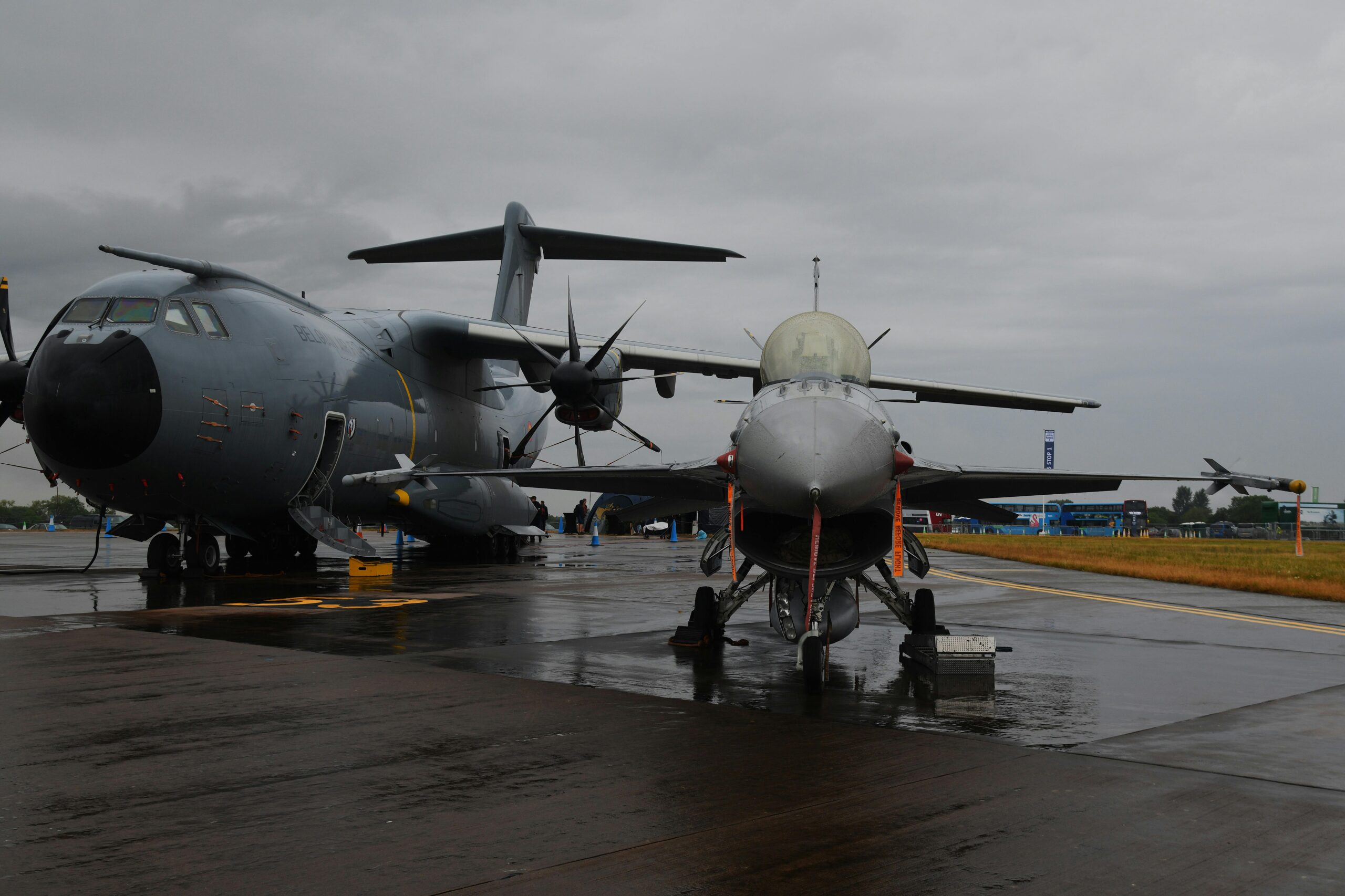Table of Contents
In a significant development for Canada’s aerospace sector, the British Columbia Institute of Technology (BCIT) has announced the momentous reintroduction of its Aircraft Maintenance Engineer (AME) Category ‘S’ – Structures program. With the first student intake scheduled for September 8, 2025, this revival addresses a critical skills shortage and opens a robust career pathway for aspiring aviation mechanics and technicians. For those considering a future in Canada, particularly within a high-demand skilled trade, this program represents a formidable opportunity to build a successful career and a potential route to permanent residency. The AME-S program is not just about education; it’s about forging the next generation of specialists who ensure the safety and airworthiness of aircraft across the globe.
A Deeper Look into the Revitalized AME-S ‘Structures’ Program
The AME-S ‘Structures’ specialization is a highly specialized and essential field within aviation maintenance. While other AME categories focus on mechanics (M) or avionics (E), the ‘S’ rating is dedicated to the very skeleton and skin of an aircraft. These professionals are responsible for the inspection, repair, and modification of all structural components, ensuring the aircraft’s integrity against the immense stresses of flight. The reintroduced BCIT program, hosted at its state-of-the-art Aerospace Technology Campus in Richmond, BC, is meticulously designed to provide students with the profound theoretical knowledge and practical, hands-on skills required to excel. The curriculum delves deep into critical areas such as sheet metal fabrication, advanced composite material repairs, and comprehensive corrosion control. Students will gain intimate familiarity with every major structural element, including the fuselage, wings, tail assembly, and landing gear. This is not just textbook learning; it is an immersive experience that blends classroom theory with extensive workshop training, where students learn proper tool usage, interpret complex technical manuals, and perform repairs that meet stringent industry and safety regulations.
BCIT’s approach ensures that graduates are not just qualified but are truly job-ready. The training environment replicates the real-world settings of Maintenance, Repair, and Overhaul (MRO) facilities and component repair shops. By working with the same materials, tools, and documentation used in the industry, students develop a level of competence and confidence that is highly valued by employers. The focus on both traditional metallurgy and modern composites is particularly crucial, as aircraft fleets increasingly incorporate a mix of materials to enhance strength and reduce weight. This comprehensive training prepares graduates to work on a wide variety of aircraft, from small planes and helicopters to the largest commercial airliners, making them versatile and highly sought-after assets in the aviation workforce.
The Paramount Importance of Transport Canada Approval and Licensing
A pivotal feature of BCIT’s AME-S program is its approval from Transport Canada (TC), the national regulatory body for aviation. This TC approval is a seal of quality and compliance, signifying that the program’s curriculum, facilities, and instructional standards meet the rigorous requirements for professional AME licensing in Canada. For students, the benefits of graduating from a TC-approved program are immense. The most significant advantage is the credit they receive towards the mandatory experience requirement for obtaining their AME-S license. Typically, aspiring AMEs must accumulate a specific number of months of practical experience in the field before they can be certified. The intensive, hands-on training within the BCIT program is recognized by Transport Canada, effectively providing a fast-tracked licensing pathway. This accelerated route saves graduates valuable time and allows them to become certified, and thus more valuable, professionals much sooner in their careers.
This certification is the key that opens doors to senior roles and greater responsibilities. A licensed AME is authorized to sign off on maintenance work, a critical function that carries immense responsibility for passenger safety and aircraft airworthiness. For international students, graduating from a TC-approved program is particularly advantageous. It demonstrates to potential employers and immigration authorities that they possess a credential that is not only recognized but is the gold standard within the Canadian aviation industry. This official endorsement provides a clear, structured, and respected path to professional accreditation, significantly enhancing a graduate’s employability and solidifying their standing as a skilled professional in Canada’s workforce.
Charting Your Career Path: Immense Opportunities for AME-S Graduates
The demand for skilled AME-S technicians in Canada and globally is exceptionally high. As airlines expand their fleets and older aircraft require more intensive maintenance to remain in service, the need for structural repair specialists has skyrocketed. Graduates of the BCIT AME-S program are poised to step into a wide array of rewarding career opportunities across the aerospace industry. They are prime candidates for positions within major airlines, regional carriers, and specialized helicopter operators, all of which maintain their own in-house maintenance teams to ensure the swift and safe turnaround of their fleets. Beyond the airlines, the largest employers are the massive Maintenance, Repair, and Overhaul (MRO) organizations. These facilities are the epicenters of heavy aircraft maintenance, where entire planes are disassembled for thorough inspection and structural overhaul. AME-S technicians are the backbone of these operations.
Furthermore, the skills acquired in the program open doors to specialized component repair shops that focus on specific parts like landing gear, flight control surfaces, or engine cowlings. Some graduates may even find opportunities with global deployment teams that travel the world to perform on-site structural repairs on damaged aircraft. The career is dynamic, challenging, and crucial for public safety. Here are some of the key sectors and employers actively seeking AME-S professionals:
- Major and Regional Airlines: Performing routine inspections, line maintenance, and structural repairs to keep their fleets airworthy.
- Maintenance, Repair, and Overhaul (MRO) Facilities: Engaging in heavy maintenance checks, extensive structural modifications, and complex repair projects on aircraft from various operators.
- Helicopter Operators: Specializing in the unique structural demands of rotary-wing aircraft, which are vital in industries like emergency services, natural resources, and tourism.
- Aircraft Component Repair Shops: Focusing on the detailed overhaul of specific structural parts, requiring a high degree of precision and specialized knowledge.
- Aircraft Manufacturing Companies: Working on the assembly line or in quality control, ensuring new aircraft structures meet design specifications.
A Strategic Pathway to Canadian Permanent Residency for AME Graduates
For international students, the BCIT AME-S program is more than just an educational investment; it is a strategic and highly effective pathway toward building a life in Canada. The process begins with securing a study permit to attend this prestigious program. Upon successful graduation from a designated learning institution like BCIT, international students are typically eligible to apply for a Post-Graduation Work Permit (PGWP). The PGWP allows them to work for any employer in Canada for a period of up to three years, providing the perfect opportunity to gain the crucial Canadian work experience needed for permanent residency. As an AME, graduates enter a field classified as a skilled trade (NOC 72404 – Aircraft mechanics and aircraft inspectors), which is in high demand across the country.
After acquiring at least one year of full-time, skilled work experience in Canada, graduates become strong candidates for permanent residency through several immigration streams. The most prominent is the Canadian Experience Class (CEC), a key program managed under the Express Entry system. The points-based Comprehensive Ranking System (CRS) of Express Entry highly values Canadian education and Canadian work experience, giving BCIT graduates a significant advantage. Additionally, the Federal Skilled Trades Program (FSTP) is another Express Entry option specifically for qualified tradespersons. Beyond federal programs, graduates may also be eligible for Provincial Nominee Programs (PNPs), such as the British Columbia Provincial Nominee Program (BC PNP), which often targets skilled workers in occupations that are critical to the provincial economy. By choosing this educational path, individuals are not just learning a trade; they are strategically aligning their professional development with Canada’s economic and immigration priorities.
Frequently Asked Questions
What is an Aircraft Maintenance Engineer (AME) ‘S’ rating?
An AME ‘S’ rating is a professional license certifying a technician to inspect, repair, and maintain the structure of an aircraft. This includes the fuselage, wings, tail, and landing gear, and involves skills in sheet metal work, composite repairs, and corrosion control.
What does it mean that the BCIT program is ‘Transport Canada approved’?
Transport Canada (TC) approval means the program meets the high national standards for AME training. Graduates from a TC-approved program receive credit towards the work experience requirement needed for their professional AME license, fast-tracking their certification process.
How does this BCIT program prepare students for a job?
The program combines essential classroom theory with extensive hands-on training at BCIT’s Aerospace Technology Campus. Students work with industry-standard tools and technical manuals on real aircraft components, ensuring they are fully prepared for the demands of the job upon graduation.
What are the job prospects for AME-S graduates in Canada?
Job prospects are excellent due to a high demand for skilled AME-S technicians in Canada’s growing aerospace industry. Graduates can find career opportunities with major airlines, Maintenance, Repair, and Overhaul (MRO) facilities, helicopter operators, and component repair shops.
How can the AME-S program lead to Canadian permanent residency?
International graduates can apply for a Post-Graduation Work Permit (PGWP) to gain Canadian work experience. This experience makes them strong candidates for permanent residency through immigration programs like the Canadian Experience Class (CEC) or a Provincial Nominee Program (PNP).
Talk to us to find out more. ->
The content above is not intended to provide legal advice or opinions of any kind and may not be used for professional or commercial purposes.







